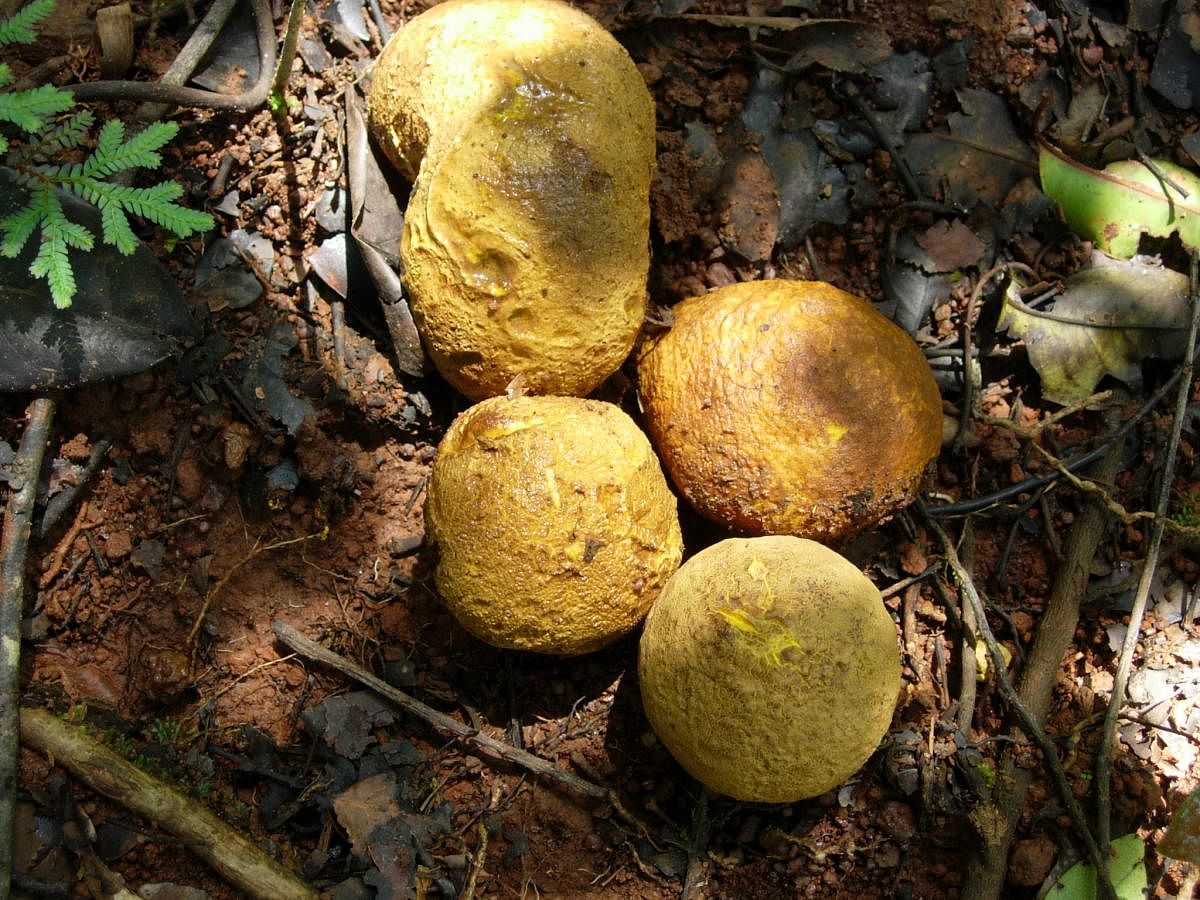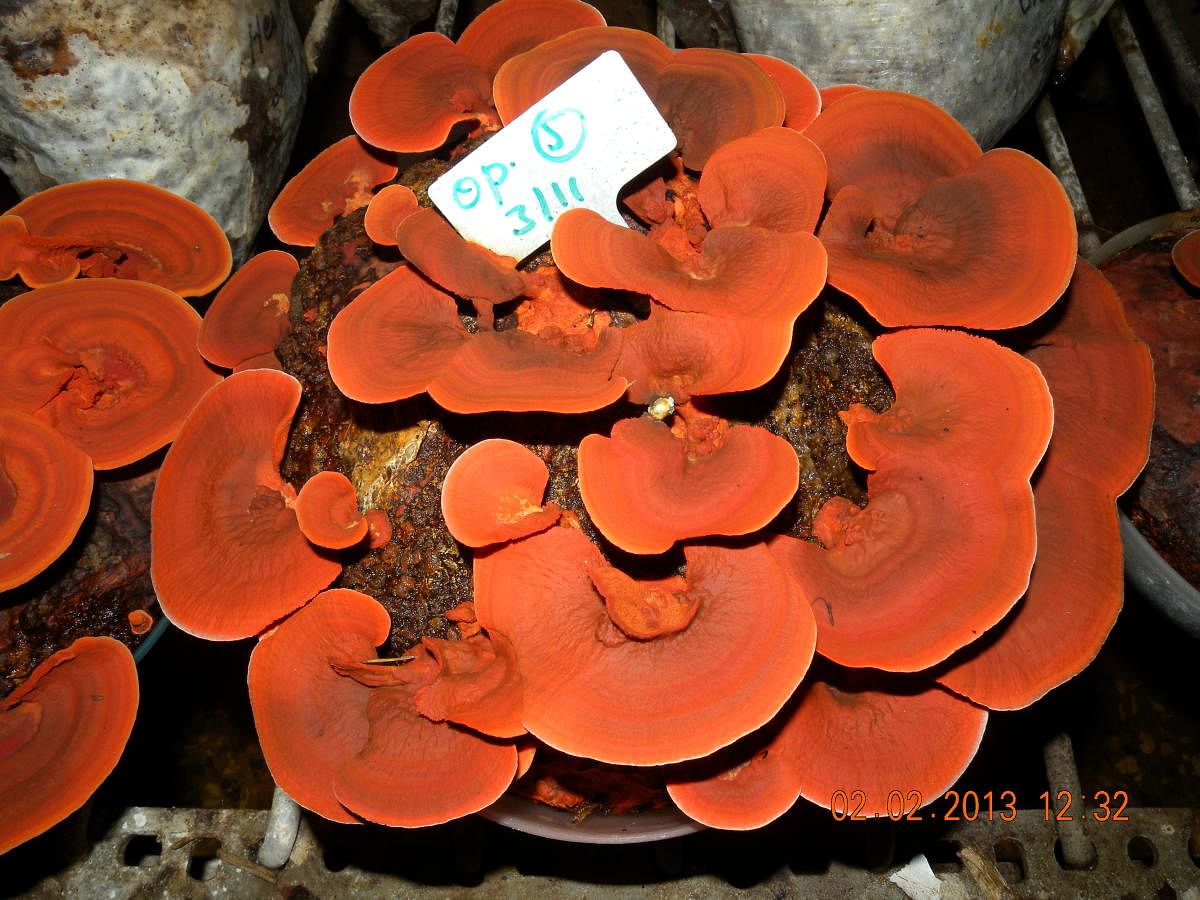
Srimathi Kumara, from Sagara, Western Ghats, has observed a trend. “We may not eat mushrooms as we see them as non-vegetarian food. But now, words about their nutritive qualities have spread, and I find people taking a liking to them.”
Mushrooms are rich in protein, potassium, iron, sodium, B vitamins such as riboflavin (B2), folate (B9), thiamine (B1), pantothenic acid (B5), and niacin (B3).
They are the only vegetable source of Vitamin D. They also have no sugar, so they’re ideal for those who have diabetes. They need little space to grow — like vertical spaces on available substrates.
And, of course, they’re tasty.
“Yet, sadly, only 40 grams of mushroom is consumed per capita per person in India. They remain unexplored as an important food source,” says Dr Meera Pandey, Principal Scientist, Mushroom lab, Indian Institute of Horticultural Research, Bengaluru.
“We have a rich diversity of mushrooms in India,” she adds. There are more than 1.5 billion fungi on earth.
Our forests, which are home to mushrooms, have been declining due to developmental activities and climate change.
The ICAR-Indian Institute of Horticultural Research (IIHR) has been conducting explorations since the last three decades and has conserved more than 50 species of mushrooms that can be utilised for food and medicine, and in microbial-based industry.
The institution has conducted 10 explorations covering the forests of the Western Ghats of Karnataka, Andaman Islands, the Dang forest region of Gujarat, Vindhyachal forests of Madhya Pradesh, forests of Sikkim, Aravalli forests of Rajasthan as well as forests of Manipur and Tripura.
As a result, 11 species of wild mushrooms have been collected by the local population and used as food.
They have been conserved in the germplasm repository of the ICAR-IIHR and are being studied for domestication and commercialisation to broaden the availability of edible mushroom varieties for Indian consumers.
The institution has successfully domesticated and commercialised two wild species of edible mushrooms.
One is the Calocybe indica, an indigenous species of West Bengal, the first Indian species to be commercialised in 1993. This species has since then become the commercial hot-weather mushroom, and is popularly known as milky mushroom, predominantly cultivated in Tamil Nadu, Andhra Pradesh, Telangana, Kerala, and as a summer crop in northern India.
Another wild species of pink oyster mushroom collected from the forests of Western Ghats of Karnataka was domesticated and commercialised by the ICAR-IIHR in 2011 and was released as Arka-OM-1. It grows wildly in Shivamogga and is a staple there. Four more mushrooms have been collected from the Western Ghats.
The locals enjoy the taste of puffball mushroom, Termitomyces, also called as beranbe in Kannada; tremella (not eaten in India), and the white jelly fungus, which is ‘so smooth and buttery that even Brahmins can eat it’, say the locals. The fifth, orange polypore, is not eaten as it’s too hard. Termitomyces is found throughout India and grows on termite mounds.
Fungi fangirl
Namratha Goenka has been growing mushrooms commercially on her terrace since last year, and says there’s been a widespread awareness about them.
She has been trained in mushroom cultivation by the IIHR. “Mushrooms certainly have a growing market, and though some castes feel mushrooms cooked with onion and garlic will give the body rajasic tendencies, others are more open to them. Button mushrooms are the ones most commonly sold and eaten.”
“Farmers can integrate growing mushrooms into their farming practices,” she says. Other edible mushrooms, podaxis and phellorinia, are found in Rajasthan, which are dehydrated and sold as chips during the rains. Lots of edible mushrooms are found in Sikkim.
Seven types of mushrooms have been collected from the forests of Manipur. Wild shiitake mushrooms are sold as garlands for local ceremonies.
The black ear mushroom and the Schizophyllum mushroom (split-gill mushroom), usually added to cakes, are hugely prized by all.
The IIHR team found a wild Pleurotus tuber-regium mushroom growing in Tripura. They now want to sell it.
Dr Pandey says, “Truffle mushrooms that grow underground are a delicacy in Europe and America, and are rarely found in Himachal Pradesh and the Jammu and Kashmir area. They are tubers and grow in temperate areas. False truffles that are not quite as tasty are found in Madhya Pradesh, Chhattisgarh, Shivamogga and Andaman Islands.”
In Bengaluru...
The Pleurotus mushrooms grow on the Singapore Cherry Tree in namma Bengaluru. They are black and tasty. This variety will be released commercially by the IIHR very soon.
The Macrocybe mushroom, tastier than the Calocybe, has a good shelf life and will be released as a commercially grown variety.
Another mushroom grown on paddy straw is the Volvariella species, grown in Bengaluru and the IIHR is working to make it available easily.
A whole branch of ornamental mushrooms has developed around these coloured mushrooms.
